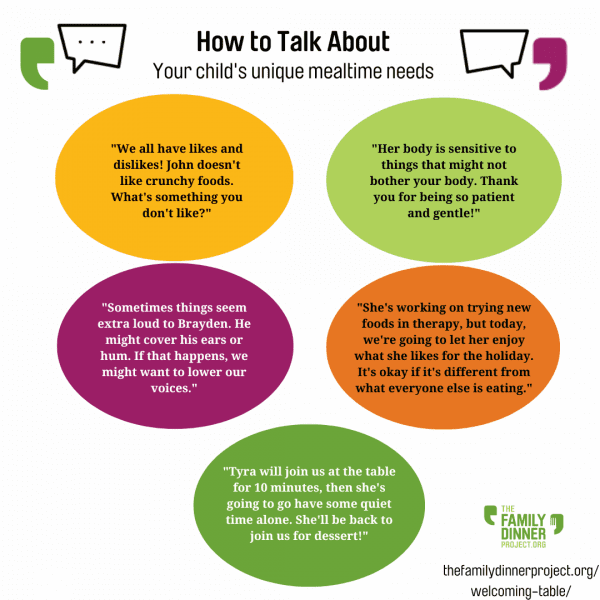[:en]
When my older son was a toddler, he was a generally adventurous eater with a good appetite. People commented on his love for strong flavors like salmon and ginger, and his willingness to eat different foods. But as his parents, we noticed another side to his eating habits: His resistance to eating most fruits, the way he gagged when someone opened a yogurt container near him, the tears and tantrums when we served him cheese or strawberries. We also saw him go into full-blown panic mode if we tried to have him help with “kid-friendly” cooking tasks like pushing the button on the smoothie blender or kneading sticky bread dough.
Sound familiar? My kid, like many others, has sensory processing issues.
He’s now 16 years old, and we know that his sensory difficulties are linked to a neurological disorder that also causes some learning challenges and visual-motor problems. He’s also a confident, bright, talented guy who’s developed plenty of strong coping mechanisms over the years. It’s sometimes hard for me to remember that at one point in time, his auditory sensitivities made family gatherings loud and uncomfortable for him, or that he might throw up at the smell of a banana or the feel of messy foods on his fingers. But when I do remember, I can vividly recall the accommodations we made to help him feel more comfortable in a variety of situations, including at family meals. I especially remember how challenging it was to help him feel safe, and to help others understand his sensory, motor, and social-emotional needs.
That’s why I’m so excited to reveal The Family Dinner Project’s newest initiative: The Welcoming Table. With support from the Tower Foundation and help from a panel of experts in neurodiversity, dietetics, special education, child psychiatry and psychology, occupational and feeding therapy, and trauma-informed care, we’ve created a new section of our website just for families whose mealtime needs go beyond the challenges of feeding typically developing kids.
At The Welcoming Table, you’ll find:
- Information on how common neurological differences like autism, ADHD, and learning disabilities can impact kids’ experiences at mealtimes;
- In-depth advice for handling a variety of sensory processing needs at dinner;
- Practical tips for improving communication and relationships at the table when some family members have different social needs than others;
- Expert perspectives on navigating mealtimes with kids who have experienced trauma;
- Insight into helping fidgety kids who aren’t developmentally able to “sit nicely” for meals;
- Ways to communicate positively about your child’s needs in social situations;
- And a new collection of table games and activities to help kids regulate, manage anxiety responses, get their sensory needs met, and channel their unique energies in positive ways so they can enjoy family mealtimes. (Need a Spanish language version? We’ve got that, too!)
We hope you’ll love this new section of The Family Dinner Project. If you have any suggestions for new topics that would help us grow The Welcoming Table initiative to be more helpful to families, please let us know! Contact us with the subject header “The Welcoming Table.”
Food

A “build your own” strategy is often helpful when kids have strong food aversions, or when they need more hands-on control of what goes on their plates. These Baked Nachos are an easy crowd-pleaser that can even be made in individual portions.
Fun

Help wiggly kids take movement breaks while staying engaged at mealtimes with a round of “Waiter, Waiter!”
Conversation
It can be hard to know how to talk about your child’s needs, especially in social settings. Here are some ideas to get the conversation started.
 [:]
[:]

Leave a Reply
You must be logged in to post a comment.